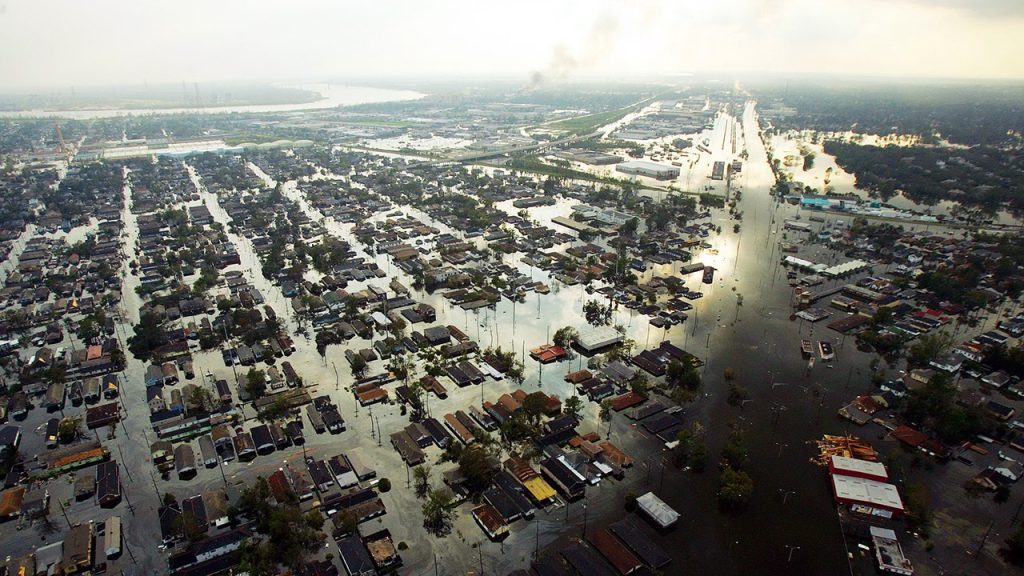On August 29, 2005, Hurricane Katrina made landfall near New Orleans, Louisiana, causing massive destruction. With sustained winds around 145 mph, the Category 3 hurricane affected areas near New Orleans to Mobile, Alabama. The storm caused over 50 failures of the levees and flood walls around New Orleans, leading to widespread flooding. Despite a mandatory evacuation, about 80% of the city’s population evacuated, with 10,000 seeking shelter at the Superdome.
The aftermath of Katrina included reports of stranded citizens, looting, and crimes as emergency management officials struggled to respond effectively to the disaster. Many areas, including the Ninth Ward, Lakeview, and St. Bernard Parish, experienced significant flooding, with helicopters used to rescue stranded individuals. The federal government faced criticism for delays in providing assistance, leaving many in need of food and water. Evacuees sought shelter at locations such as the Houston Astrodome, while military presence and relief efforts were established in New Orleans by September 2.
With an estimated death toll exceeding 2,000 in Louisiana, Katrina’s impact was devastating. Drowning, injury, trauma, and heart conditions were major causes of death, and the hurricane caused over $160 billion in damage. The population of New Orleans declined by 29% between 2005 and 2011. Meanwhile, the U.S. Army Corps of Engineers worked to pump out floodwaters and rebuild breached levees, with support from numerous countries and troops deployed to assist with cleanup and reconstruction.
Katrina will likely be remembered as one of the worst natural disasters in U.S. history, ranking as the fourth deadliest hurricane in terms of death toll. Despite initial challenges and delays in response, efforts to evacuate victims, provide relief, and restore the city continued in the weeks and months following the storm. The impact of Katrina extended beyond physical damage, leading to significant population displacement and economic losses, as New Orleans and other affected areas worked to recover and rebuild in the aftermath of the disaster.
As the city of New Orleans and the Gulf Coast region grappled with the aftermath of Katrina, efforts to address the widespread destruction and loss of life continued. The hurricane’s effects, including flooding, property damage, and loss of life, prompted a national conversation about disaster preparedness, emergency response, and infrastructure resilience. Through ongoing recovery and rebuilding efforts, the region sought to recover from the devastation of Katrina and build stronger, more resilient communities in the face of future natural disasters.













